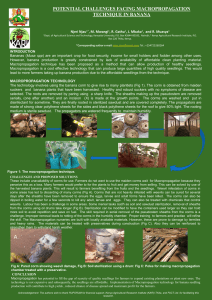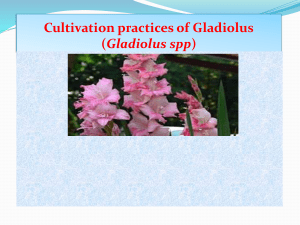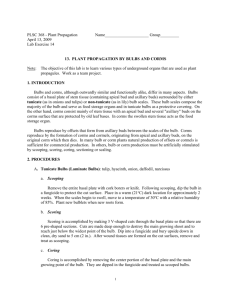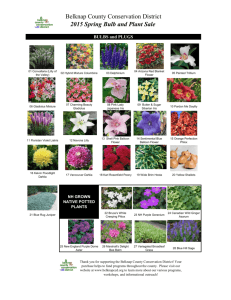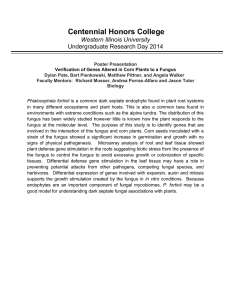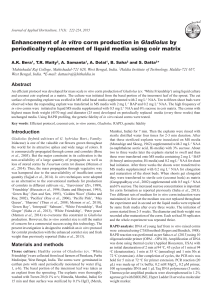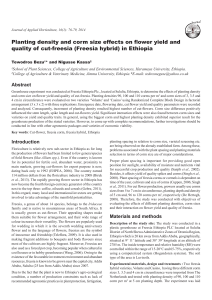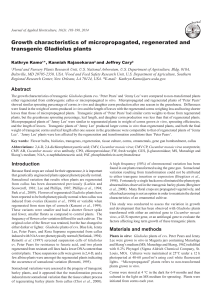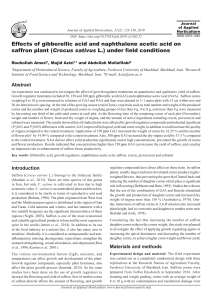was omitted from Station Cjrculsr of Information
advertisement
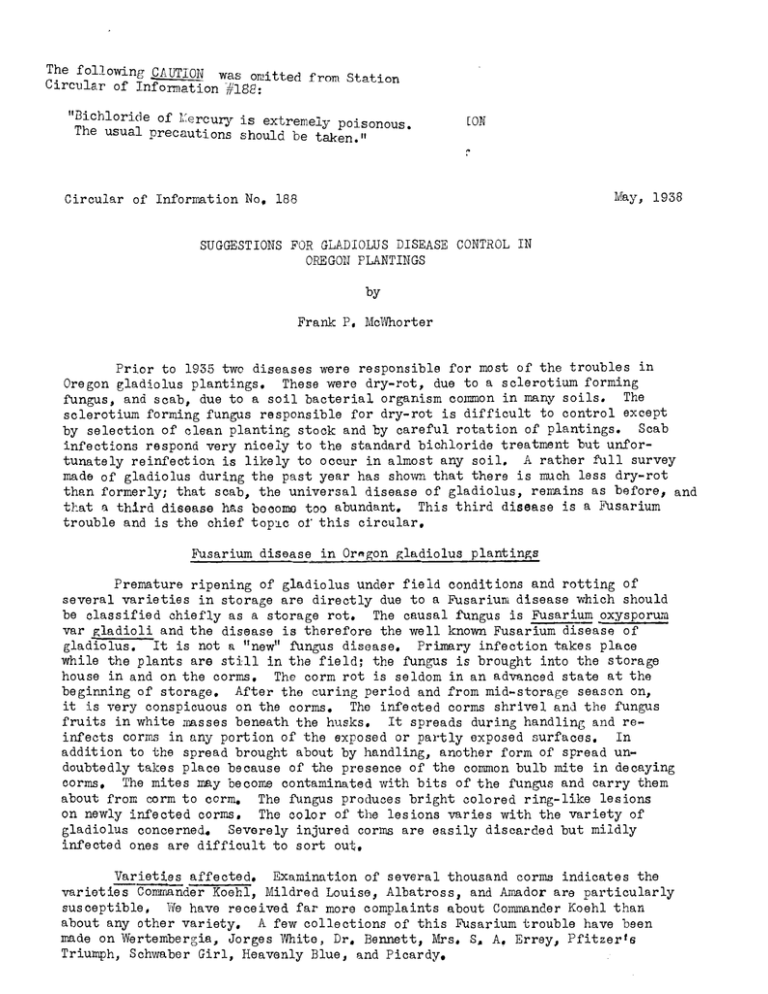
The following QLUflON was omitted from Station Cjrculsr of Information lOO: "Bichloride of iercury is extremely poisonous. The usual precautions should be taken." [ON May, 1938 Circular of Information No, 188 SUGGESTIONS FOR GLADIOLUS DISEASE CONTROL IN OREGON PLANTINGS by Frank P. MoNhorter Prior to 1935 two diseases were responsible for most of the troubles in Oregon gladiolus plantings. These were dry-rot, due to a selerotium forming The fungus, and scab, due to a soil bacterial organism common in many soils. solerotium forming fungus responsible for dry-rot is difficult to control except Scab by selection of clean planting stock and by careful rotation of plantings. infections respond very nicely to the standard bichloride treatment but unfortunately reinfection is likely to occur in almost any soil. A rather full survey made of gladiolus during the past year has shown that there is much less dry-rot than formerly; that scab, the universal disease of gladiolus, remains as before, and too abundant. This third disease is a Fusarium that a third dieoase has beco trouble and is the chief topic of this circular. Fusarium disease in Oregon gladiolus plantings Premature ripening of gladiolus under field conditions and rotting of several varieties in storage are directly due to a Fusarium disease which should be classified chiefly as a storage rot. The causal fungus is Fusarium oxysporum var gladioli and the disease is therefore the well known Fusarium disease of It is not a "new" fungus disease. Primary infection takes place gladiolus. while the plants are still in the field; the fungus is brought into the storage house in and on the corms. The corm rot is seldom in an advanced state at the beginning of storage. After the curing period and from mid-storage season on, The infected corms shrivel and the fungus it is very conspicuous on the corms. It spreads during handling and refruits in white masses beneath the husks. In infects corms in any portion of the exposed or partly exposed surfaces. addition to the spread brought about by handling, another form of spread undoubtedly takes place because of the presence of the common bulb mite in decaying The mites may become contaminated with bits of the fungus and carry them corms, about from corm to corm. The fungus produces bright colored ring-like lesions on newly infected corms. The color of the lesions varies with the variety of gladiolus concerned. Severely injured corms are easily discarded but mildly infected ones are difficult to sort out. Examination of several thousand corms indicates the Varieties affected. varieties Conider Koohi, Mildred Louise, Albatross, and Amador are particularly susceptible. We have received far more complaints about Commander Koehi than about any other variety. A few collections of this Fusarium trouble have been made on Wertembergia, Jorgea lNhito, Dr. Bennett, Mrs. S, A. Errey, Pfitzers Triumph, Schwaber Girl, Heavenly Blue, and Picardy, 2 Control Suggestions. The varieties which are frequently and severely infected with this sarium disease should receive special handling. Special planting stocks must be developed. 1, Carefully selected, apparently healthy cormz sizes, 1, 2, or 3 should be treated in Bichloride of Mercury 1 to l,QOO for three hours.* 2. Those should be planted in isolated rows, They should be spaced widely in the rows so that individuals which prove diseased may be rogued out without disturbing the healthy ones. 3. Plants which yellow or die prematurely should be rogued as soon as they are observed, 4. The progeny of the apparently healthy plants should be set aside for developing clean planting stock. They should be kept in new trays or sterilized trays and isolated to avoid contamination. Treatment of planting stock cormels. It is not feasible to try to develop selected planting stock from cormels. Cormels should be treated in bichloride and planted out for commercial production. The certain way to circumvent this Fusariuma trouble is to build up special planting stock of large apparently clean corms and then take precautions to prevent infection during subsequent growth and handling. The cormels from the stock which has been selected, treated, isolated, and carefully rogued should make excellent planting stock for second year use.
